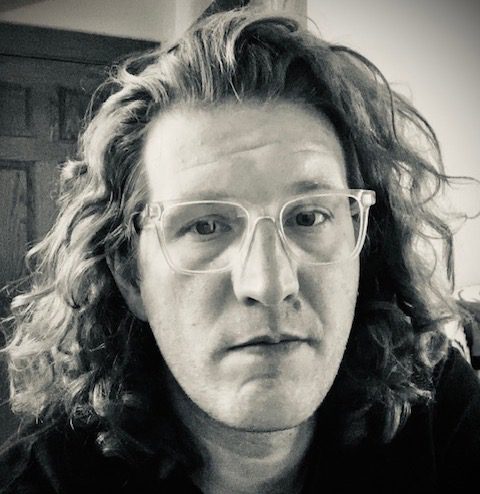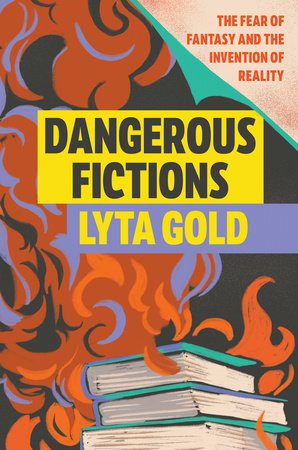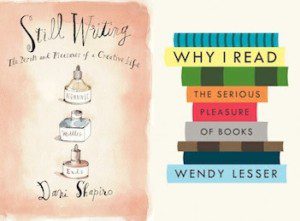
I’m sorry to do this to you, but take a look at this quote:
As rhetoric has been sometimes thought to signify nothing more than the scholastic study of words, and phrases, and tropes, so criticism has been considered as merely the art of finding faults; as the frigid application of certain technical terms, by means of which persons are taught to cavil and censure in a learned manner. But this is the criticism of pedants only. True criticism is a liberal and humane art.
These are words I live by, or, more accurately, words I write by. They come from Hugh Blair’s Lectures on Rhetoric and Belles Lettres (1783), and if you haven’t noticed, shit hasn’t changed that much. Critics are still seen as inherently, well, critical, as if their primary objective is to condemn, attack, slam, revile, and so on. People still think of critics only as those writers who are telling you whether or not you should read a book or see a film or purchase an album.
Bullshit. The role of the critic is, for me, about connection. How many books have you read that no one else you know has read? It happens to me all the time. There are simply too many books, too many authors, for any two people to have read the same exact list of works. How sad to let all your thoughts and feelings about a given text languish. Well, that’s where critics come in. Through them, I can finally have an enlightened conversation about literature. The critic becomes a stand-in friend so that I can contrast my response to a book against theirs. I realize this is a very personal feeling, but it’s important to me. Otherwise I would have no one to talk to.
I don’t think I’m alone in this, and in fact there exists a niche market of publishing that directly answers my need for literary conversation. I’m referring to the book-length essay by fiction writers and critics that celebrates, extols, elaborates upon, and investigates the whys and hows and whats of writing and reading. These range from the ostensibly instructive (Walter Mosley’s This Year You Write Your Novel, Francine Prose’s Reading Like a Writer) to the appreciative (Joe Queenan’s One For the Books) to the theoretical (Charles Baxter’s Burning Down the House, Annie Dillard’s Living by Fiction, E.M. Forster’s Aspects of the Novel). But whatever the approach, one thing remains true for all of them: these are books by writers for writers.
Can these books, as their book flaps and introductions suggest, be enjoyed by people who love literature but aren’t writers, or by those who revere art and skill and beauty but aren’t even readers? Or will non-writers and non-readers find the assertions in these books pretentious, self-aggrandizing and confounding? Would everyday people characterize these books the same way they did in Blair’s day?
Such were the questions that ran through my mind as I read two recent examples of this genre––two books that take very different approaches to discussing literature and the life of those who are dedicated to it. Dani Shapiro’s Still Writing: The Perils and Pleasures of a Creative Life focuses, as its title suggests, on what it means to be a writer, while Wendy Lesser’s assuredly academic Why I Read: The Serious Pleasure of Books takes the complementary view—that of a reader and a critic. But though their aims may be fundamentally different, similarities abound. These books are for very specific types of people, people with particular tastes and interests who, for the most part, don’t need to be persuaded. We already love books. We know their power. We’re the choir. But sometimes even the choir needs a little inspiration.
Dani Shapiro’s Still Writing takes a Zen-like approach to the writing life. In fact, Still Writing could have easily borrowed its title from Ray Bradbury’s Zen in the Art of Writing, as Shapiro makes more than occasional references to Buddhism and its relation to the kind of self-examination writing allows for. The book is comprised of short, meditative sections that range from simple assertions about creativity to personal anecdotes from Shapiro’s life. In the Introduction she writes: “I do believe… that everything you need to know about life can be learned from a genuine and ongoing attempt to write.” Her enterprise, then, is one of life-lessons as well as write-lessons.
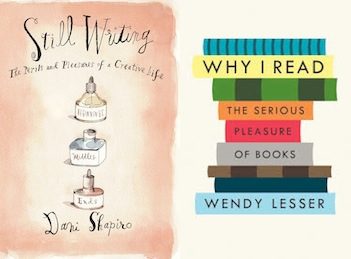 The larger sections of the book are divided up by “Beginnings,” “Middles,” and “Ends,” which deal with more than these terms’ relationships to manuscripts. In “Beginnings,” for example, Shapiro describes her first big writing assignment for The New Yorker, a kind of beginning to her career. She relates how her son, an aspiring rock guitarist, plans out a music video for a song and even “the record label who will sign” his band, “before he’s learned to play the thing.” Young, aspiring writers will understand this premature thinking. How many of us haven’t dreamt of wide success and Pulitzer prizes and interviews on Charlie Rose? This is another kind of beginning.
The larger sections of the book are divided up by “Beginnings,” “Middles,” and “Ends,” which deal with more than these terms’ relationships to manuscripts. In “Beginnings,” for example, Shapiro describes her first big writing assignment for The New Yorker, a kind of beginning to her career. She relates how her son, an aspiring rock guitarist, plans out a music video for a song and even “the record label who will sign” his band, “before he’s learned to play the thing.” Young, aspiring writers will understand this premature thinking. How many of us haven’t dreamt of wide success and Pulitzer prizes and interviews on Charlie Rose? This is another kind of beginning.
Shapiro offers some hard-nosed advice for literary genesis: “Don’t answer the phone. Don’t look at e-mail. Don’t go on the Internet for any reason, including checking the spelling of some obscure word, or for what you might think of as research but is really a fancy form of procrastination.” But these suggestions, though undoubtedly wise, aren’t where Still Writing succeeds best. All books of advice for aspiring writers are double-edged swords. Much of Shapiro’s counsel will be seen as correct and astute, even inspirational, but when she describes just how difficult the act of daily writing is––”It’s hard––I know just how hard––and I hate to tell you this, but it doesn’t get easier”––one might come out more discouraged than encouraged. We know that Shapiro has already done it; she’s published novels and memoirs and numerous essays. Her assurance feels, at times, a bit hollow, much the way somebody describing, from the top of a mountain, just how arduous and dangerous the assent was doesn’t assist us in making the climb.
But this criticism isn’t particular to Still Writing. Every book of this type takes the same risk, thanks to the tenuous egos of young writers. And choosing Shapiro’s book certainly won’t do them any harm. Her prose is, as always, lovely and restrained, a perfect tone for a project like this, and the few times it runs the risk of alienating amateurs, it does so in a way that might actually be useful. Let us, for a moment, take another tack in thinking about how an aspiring writer might respond to Shapiro’s book. Take this passage:
There’s nothing wrong with ambition. We all want to win Guggenheims and live and write in the south of France, or some version thereof––don’t we? But this can’t be the goal. If we are thinking of our work as a ticket to a life of literary glamour, we really ought to consider doing something else. When I was first teaching, a student came up to me and asked if she should become a writer, or go work for Merrill Lynch. “Merrill Lynch!” I replied. Not because this student wasn’t talented, but because she was even able to formulate that particular calculus.
The only reason to be a writer is because you have to.
We’ve heard statements like this throughout our lives, this idea that our passions, our ambitions, will lead us on, rendering the question of our careers irrelevant. But, say you’re a nineteen-year-old kid, you’ve just started writing and you come across Shapiro’s book. You’re unsure of yourself and your choice to write because the environment you live in isn’t exactly encouraging of creative endeavors. This book, you think, will offer you solace, comfort, the assurance that you’re on the right track and your town is crazy. But what would you make of the above passage? Will you feel, like some do, that, yes, you have to write, that your writing has always been a foregone conclusion? Or will you feel like maybe you don’t have to write, that it isn’t in you the way it seems to be in Shapiro or any other established artist extolling their need to create? What if you feel, instead, like one of the uninitiated, like you’ve been excluded from a club because you don’t believe yourself to have the preternatural propensity for it?
One could look at this two ways: maybe our nineteen-year-old doesn’t have the right temperament for writing. Maybe Shapiro’s words will save the teen years of foolish toil in a field in which she does not belong. Or maybe it will veer her off the course of art unfairly and prematurely. Maybe the feeling that you need to write comes only after you’ve done it for a long time. Maybe it’s something you earn from persistence instead of a characteristic that propels it.
I do not mean to suggest that Shapiro intends any of this, only that the way we often talk about creativity and art can be, depending on how you look at it, accidentally detrimental to something that Shapiro herself values: community. “We are part of a great tapestry of those who preceded us,” she writes, and I know she believes this; know, further, that she has zero interest in excluding anyone from this tapestry. But creative drive is often touchy and can be cut by the slightest nick.
Still Writing is a wonderful book, filled with insightful and incisive commentary on the writing life. It is hard work, and it does require a certain constitution that, let’s face it, isn’t exactly common. But what if we accept the truth of these premises? What, then, is the value of this book? What is its utility (assuming, of course, that utility even matters when discussing literature)?
If instruction isn’t its primary use, and if encouragement weren’t so prickly, then maybe the one thing we could cull from Still Writing is a feeling of communion. Writing is an isolating enterprise. Even when we’re with our loved ones, our minds often remain in the realm of fiction, poetry, literature. No one can follow us there, except through the power of words. Critics (and writers functioning as critics) can offer us direct comfort, and not simply the comfort of storytelling––which assures that we’re not alone as human beings––but more the assurance that we’re not alone as writers.
Why, after all, are we all here? Why do we write? Why are you reading this review? Shapiro’s answer is one of the most beautiful and impassioned passages in the book:
Still writing? I usually nod and smile, then quickly change the subject. But here is what I would like to put down my fork and say: Yes, yes, I am. I will write until the day I die, or until I am robbed of my capacity to reason. Even if my fingers were to clench and wither, even if I were to grow deaf or blind, even if I were unable to move a muscle in my body save for the blink of one eye, I would still write. Writing saved my life… Once in a great while, I look up at the sky and think that, if my father were alive, maybe he would be proud of me. That if my mother were alive, I might have come up with the words to make her understand. That I am changing what I can. I am reaching out to the dead and to the living and the not yet born. So yes. Yes. Still writing.
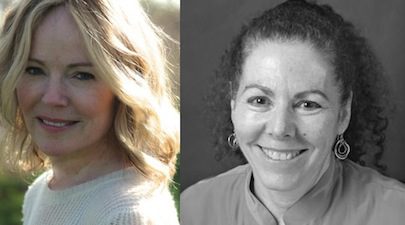
Wendy Lesser’s Why I Read also tackles these questions, but from an altogether different point of view. Lesser also believes in community, which is clear on every single page. As founder and editor of The Threepenny Review and author of many books of criticism and nonfiction, Lesser approaches literature with a microscopic eye. She and Shapiro are very different writers. “I have never consciously thought about audience before,” Lesser states, early in the book, whereas Shapiro writes for “one specific reader at a time,” which has been her dead father, her mother, and her husband.
Also unlike Shapiro, Lesser sort of expects you to be a literary type. Who else, after all, would read a book with such a title? By not even pretending to write for everyone, Lesser limits the scope of her project, which allows it to be the book it should be. There’s no posturing for non-readers about how to relate literary lessons to a normal life, and there are no superfluous explanations of books or their premises. She trusts that you’ll be able to follow her, partly because she assumes you’re in some fundamental way just like her.
But just because Lesser seems to think that we’re on her level doesn’t mean she won’t try to teach us. Though the title suggests otherwise, Why I Read is really about what she reads and how it works. Like James Wood in How Fiction Works, Lesser discusses the books she loves, the ones cozily resting on the shelf near her desk. No matter how personal the choices are, and how casual her prose is, it doesn’t change the academic scrutiny with which she approaches individual works. Lesser is a critic of the highest order. Take this examination of grandeur and intimacy in poetry:
And yet the material these poems deal with is so powerful, so stirring, that a sense of grandeur enters in. “The Soul selects her own Society–––/ Then shuts the Door” begins one of Dickinson’s most memorable twelve-line poems. You can almost hear the door shutting, in the abrupt two-beat line that follows the more leisurely four- or five-beat opening. It is through the action of closing out the world––firmly, rhythmically, precisely––that Dickinson lifts her poems up to the level at which we seem to be gaining access to more than just ourselves.
This is an exquisite analysis, and it’s made all the more insightful in its context, as one of the many examples Lesser provides to discuss the grand and the intimate. Lesser makes a number of profound statements about literature and its role in our lives. Here she discusses the way literature conveys truth:
Literature is, among other things, an undermining of the coherent worldview. Things can only be true in a specific way, for one reader at a time, at a particular moment in that reader’s life. This may not seem like much, but it turns out to be a great deal, because it happens over and over, each time in a different way. The truths in literature are incidental and cumulative, not global and permanent. In some moods I think that those are the only kinds of truths that really matter.
Lesser’s book, like Shapiro’s, can sometimes step into alienating territory, especially with regard to the books she picks to study. Though she brings up some more idiosyncratic works (Scandinavian mysteries, Alexander Herzen’s My Past and Thoughts, Der Nister’s The Family Mashber), she mostly focuses on the canonical: Cervantes’s Don Quixote, Proust’s Remembrance of Things Past, Dostoyevsky’s The Brothers Karamozov, Swift’s “A Modest Proposal,” Thornton Wilder’s Our Town. Though her remarks on all of these works brim with intelligence and joy, one can’t help but wonder why she chose some of the most heavily scrutinized books in all of academia. Contemporary readers, though, are not academics, and most of them have not read Proust’s seven-volume work or Cervantes’s 1,000-page novel. Shapiro is definitely preaching to the choir here. Of course, the flipside may be less desirable: a book only featuring esoteric novels and plays might run the risk of seeming deliberately obscure and, thus, alienating in another way.
Maybe Lesser just felt like writing about the books she loves and didn’t care how many others have walked down the same path. Maybe walking the same path was the whole point. All of us who toil in the literary arts are doing just this: we are traipsing on ground already covered. Who, when deciding to write a love poem, really believes they can do it better than Shakespeare? Who, attempting satire, thinks they have a better handle on it than Cervantes? But we try anyway. We sit alone in a room and try to enter into a conversation with some of the greatest minds in human history. Talk about delusional! Talk about a fool’s errand! We must be fucking nuts! This is why it’s so important for writers to have a community—the big community, the one that exists on the page, the one Shapiro and Lesser are participating in and commenting upon. We need to feel like we’re not alone, like we’re not crazy, or that we’re crazy but we aren’t the only ones.
Unlikely as it may seem, there is still much to be said in this grand conversation, much to be explored. All of Lesser’s comments on, say, Proust, are new, despite the fact that countless others have read and written about him. Shapiro’s insights into the writing life, too, are unique and unprecedented. This is why literature (and art) is so incredible and ephemeral and impossible to pin down. It’s also why criticism remains, more than 200 years after Blair’s lectures, a vital and “humane” art. There is always something new to add, some little speck as yet unexamined. Shapiro’s and Lesser’s books nudge us, tell us to slow down, take a breath, and sit for awhile with someone who knows exactly what we’re going through.


